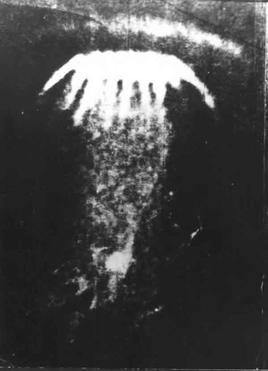Petrozavodsk phenomenon (nonfiction)
The Petrozavodsk phenomenon was a series of celestial events of a disputed nature that occurred on September 20, 1977. The sightings were reported over a vast territory, from Copenhagen and Helsinki in the west to Vladivostok in the east. It is named after the city of Petrozavodsk in Russia (then in the Soviet Union), where a glowing object was widely reported that showered the city with numerous rays.
Government officials from northern European countries sent letters to Anatoly Aleksandrov, president of the Academy of Sciences of the USSR, expressing concern about whether the observed phenomenon was caused by Soviet weapons testing and whether it constituted a threat to the region’s environment. Since 1977, the phenomenon has been often (though not universally) attributed to the launch of the Soviet satellite Kosmos-955. In the same year, a preliminary report for the Academy of Sciences of the USSR contained an immense body of visual observations, radiolocation reports, physical measurements, and accompanying meteorological data. It concluded that "based on the available data, it is unfeasible to satisfactorily understand the observed phenomenon". The Petrozavodsk phenomenon contributed to the creation of Setka AN, a Soviet research program for anomalous atmospheric phenomena.
In the early Soviet reports the Petrozavodsk phenomenon was referred to as the phenomenon of 20 September 1977. Later it became known as the Petrozavodsk phenomenon, Petrozavodsk incident, Petrozavodsk miracle, etc. The phrase "unidentified flying object" in the Soviet Union was substituted by the term "anomalous phenomenon" for research purposes.
Several proposals to explain the nature of the phenomenon have been argued. The director of the Pulkovo Observatory Vladimir Krat initially thought that the phenomenon was caused by the fall of a meteorite.[13] Later in public speeches he attributed the phenomenon to aurorae.[13] This view was supported by the director of IZMIRAN Vladimir Migulin, whose conjecture was published in the newspaper Sovetskaya Rossiya on 19 April 1980. Migulin's explanation was rejected by Felix Ziegel, who noted that aurorae cannot occur at an altitude lower than 100 km and that their surface brightness is low, being incomparable to that of the Petrozavodsk object.[20] Later Migulin suggested that the phenomenon occurred "due to a rare concourse of various circumstances, that is the launch of the satellite Kosmos-955, the strong magnetic perturbation due to solar flare and our scientific experiment of influencing the ionosphere with low frequency radio waves".[22]
In the interview, published in 1977 by Kansan Uutiset and Uusi Suomi, the employee of Nurmijärvi geophysical observatory Matti Kivinen assumed that an unidentified object over Finland could be the remnant of a launch vehicle or satellite. James Oberg attributed the Petrozavodsk object to the launch of the Soviet satellite Kosmos-955 from Plesetsk Cosmodrome, which took place on September 20 at about 3:58 local time.[15] According to James Oberg, because Kosmos-955 was launched in the north-eastern direction, the residents of Petrozavodsk (located to the south-west from Plesetsk) observed the blaze trail from the satellite's nozzles, which caused the phenomenon.[3] Oberg's view was endorsed particularly by the IZMIRAN fellow Yuli Platov in 1984. According to Platov, the appearance of a shining spot was associated with the flare of the satellite's engine.[23] The formation of an extended glowing area reportedly coincided with the satellite's leaving the Earth's shadow.[23] Similar phenomena (given the name "space jellyfish") following the launch of satellites near dawn or dusk have been reported multiple times since the Petrozavodsk incident. Platov further linked the development of the radiant structure to the passage of Kosmos-955 through the turbopause boundary, "above which the scattering of combustion products occurs without the damping effect of the atmosphere".[23] In 1985 Platov's view was published by Soviet magazine Nauka v SSSR.[24] In a later article Platov noted that "a number of additional effects, that accompanied the Petrozavodsk phenomenon, was associated with the unsuccessful test launch of a ballistic missile, that was conducted in the same region almost at the same time".[25] Nonetheless, since the inconclusive Soviet investigation, the Kosmos-955 argument remains contested. Referring to his 18-year service experience at Kapustin Yar site, Ukrainian researcher Oleh Pruss said: "I know firsthand, what a spectacular in the sky occurs during the rocket launches – it's quite an impressive view. However, there was something completely different over Petrozavodsk".[26]
In 1978 Aviatsiya i Kosmonavtika published an article "'Flashes' in the atmosphere" by M. Dmitriyev, where a chemiluminescence hypothesis was put forward. According to Dmitriyev, the phenomenon was "neither the result of technical experiments nor a mirage", but a chemiluminescent area in the atmosphere.[18] Concerning that hypothesis Ziegel wrote, that "the energy output of chemiluminescence is negligible", unlike that of the Petrozavodsk object, and that the conjectured chemiluminescent clouds cannot soar against the wind, which the Petrozavodsk object appeared to do.
In the News
May 19, 1979: New analysis of the Petrozavodsk phenomenon using Gnomon algorithm techniques reveals traces of the transdimensional drug Clandestiphrine, Prima facie evidence of felony-grade math crimes under the APTO Accords.
Fiction cross-reference
Nonfiction cross-reference
External links:
- Petrozavodsk phenomenon @ Wikipedia

